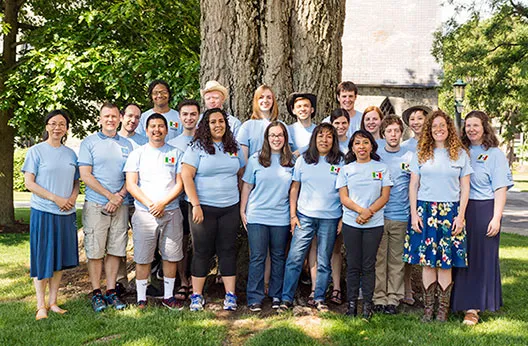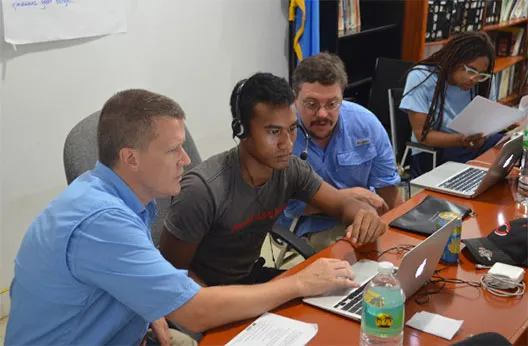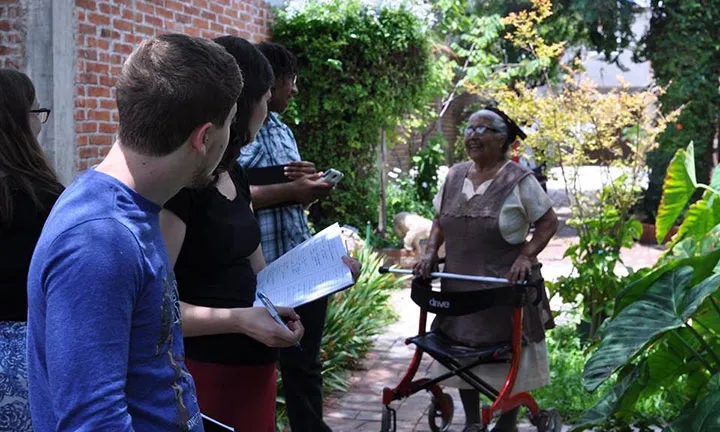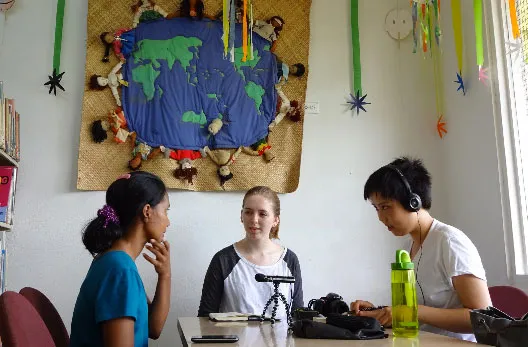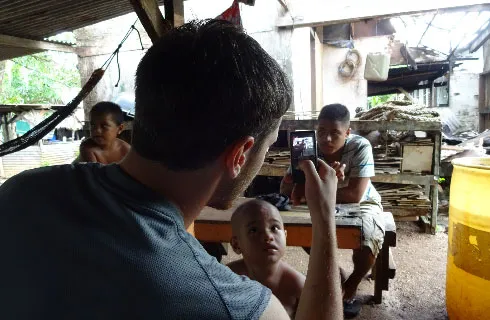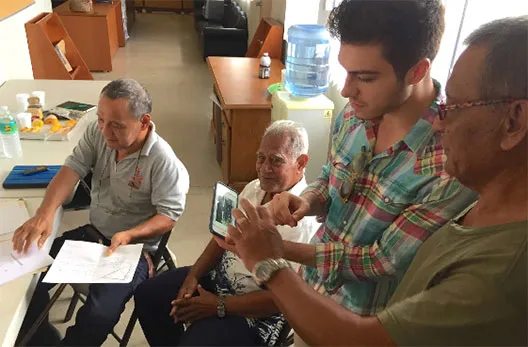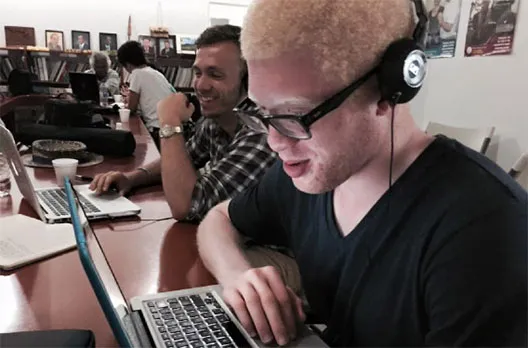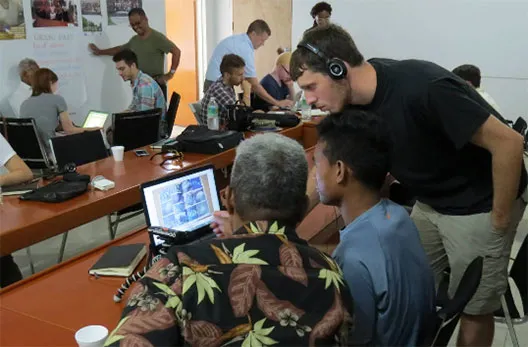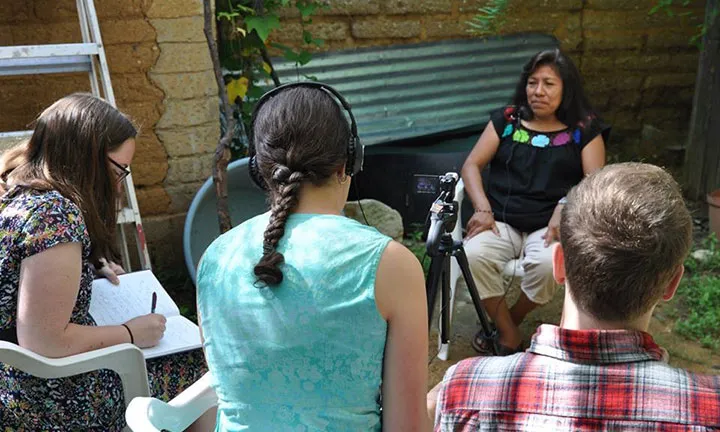Sitting in a church courtyard on a bustling market day in a small pueblo outside of Oaxaca City, Mexico, May Helena Plumb started knitting. This piqued the interest of a stream of locals, including speakers of endangered Zapotec languages, who stopped to see what she was doing.
“Although crochet, embroidery, and weaving are very common in Oaxaca, not many people know how to knit,” says Plumb, a linguistics major at Haverford College.
She and another student, Maria Vera-Alvarez, a biology major at Northern Virginia Community College, taught the visitors the basics. In turn, they received pointers on Zapotec words and phrases.
“It was great to give something back to the community that was sharing its language with me,” says Plumb.
The experience epitomized last month’s Field Linguistics School, in which 13 students and six faculty members, many from Swarthmore, traveled to Mexico and Micronesia to examine connections between the languages and landscapes. Students studied everything from sentence structures to folk taxonomies and origin myths and immersed themselves in cultural tapestry.
“We promised them a transformative experience,” says K. David Harrison, associate professor of linguistics, “and judging by their exit interviews and essays, that’s what they got.”
Harrison and Brook Danielle Lillehaugen, assistant professor of linguistics, helped to procure a prestigious grant from the Research Experience for Undergraduates (REU) program of the National Science Foundation — a first not only for Swarthmore but the field of linguistics itself.
The program began with two weeks of hands-on training on recording endangered languages, ranging from videography and elicitation techniques to ethical fieldwork practices. Then came the two weeks in the field, during which the students stayed with host families and worked closely with indigenous speakers to help to revitalize their languages.
“Students are used to seeing exotic languages represented as a nice, clean data set on a page,” says Harrison. “But they realize that it’s much messier and more complex when they get into the community; that language can’t be understood under a microscope but in its social context.”
“Field linguistics work is interesting,” adds Lillehaugen, “but the part that I really like is getting to meet people I probably wouldn’t have met. People who are very generous with their time and knowledge, and even more so when we can find ways to build something together of lasting value.”
A good example of that is the Zapotec talking dictionaries, among the more than 100 hosted at Swarthmore, on which the students and indigenous speakers collaborated. This is an especially valuable tool for a community in which Zapotec is not taught to children and the relative few speakers often face discrimination.
“Having their language online, especially in written form, gives it more power in the community,” says Plumb.
Co-sponsored by Haverford College and the Living Tongues Institute for Endangered Languages, the program stressed diversity. Students came not just from Tri-College schools and linguistics programs but public institutions and the natural and social sciences. With different backgrounds and interests, they followed some of their own paths in the field. But they came together as a group each night to share findings.
“They found that any complex scientific problem needs to be approached by a team of people, in a multidisciplinary approach,” says Harrison.
The group gathered thousands of video entries with indigenous speakers, thousands of words and sentences across eight languages, and hundreds of photographs of native species and cultural artifacts. Students shared their findings with one another back at Swarthmore, reflecting on their experiences and preparing presentations to make at their home schools in the fall.
Among highlights was a PowerPoint from biology major Joe Corcoran ’16, who took photos of artifacts, animals, and underwater reefs in the fishing village of Kapinga in Micronesia to elicit nearly 900 words from indigenous speakers. Corcoran also rose to the more personal challenge that drew him to the project in the first place.
“You’re in the middle of nowhere, studying a language you do not speak, and it takes time to adjust to the conditions,” says the Fort Washington, Pa., native. “Micronesia was hot and humid to the point that you would sweat while you were sleeping, and beds were just plywood boards. And so you have to make some adjustments to your view on things. Once you realize that you can live simply and deal with the challenges, the work is incredibly satisfying.”
For more on the group’s efforts, visit its Facebook page.
